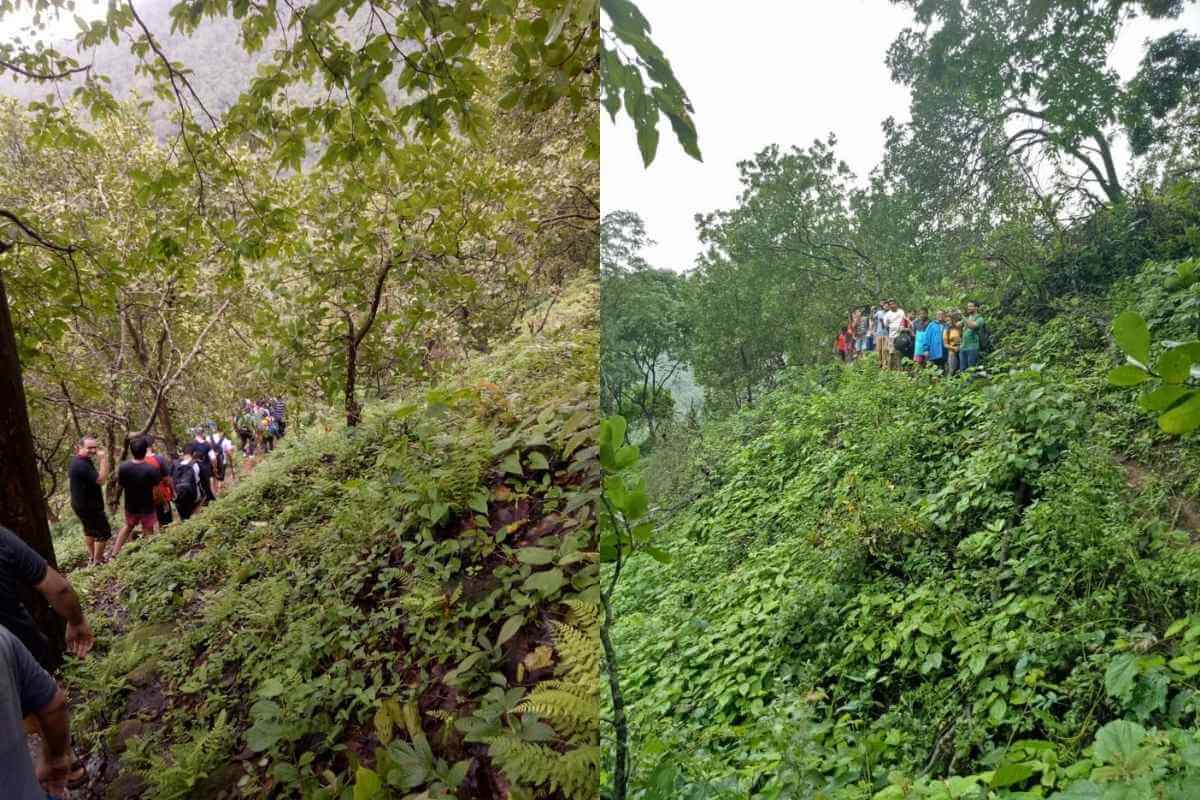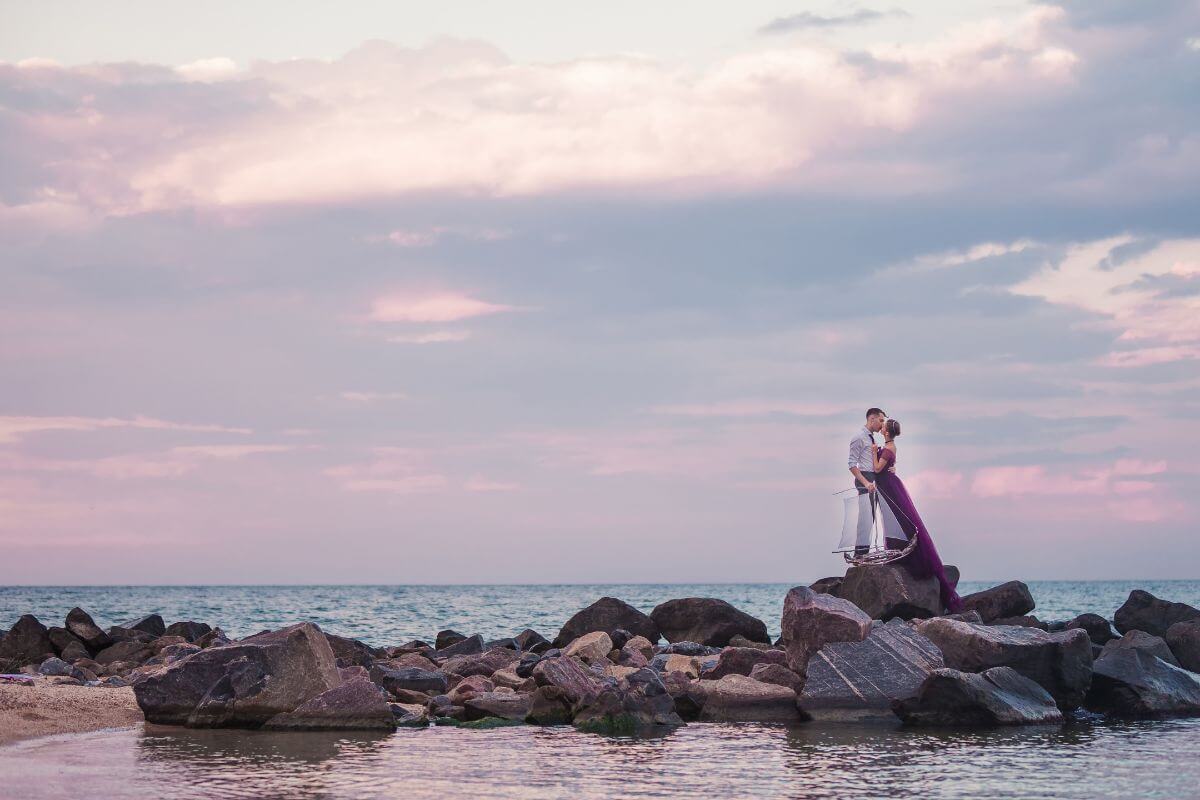Before Goa obtained independence in 1961, the Portuguese ruled for more than 400 years, and throughout that time, many local home designs created by the locals preserved the regional style with Portuguese influences. The Portuguese also established the maritime route to India across the Indian Ocean and the Arabian Sea. In India, verandahs, columns, and red roofing materials were not unusual, and in Goa, these elements of Portuguese colonial design gave buildings and homes a unique personality. Ancient sites of worship like churches, in addition to commercial and residential buildings, still maintain their original architectural styles. The homes’ moldings, architectural elements and decorations, and carefully crafted railings show Portuguese architecture.
The design prioritizes the building’s exterior, and the majority of houses feature symmetrical frontages with three connected divisions and lavishly elaborate arched windows with stucco embellishments. The Portuguese utilized these sculptures as well as other ornamental elements and embellishments in their construction. The home’s most ornate component, the railing, got special thought. The walls are often substantial and made of stone without mortar, and the roofs are typically tilted to drain rainfall.
Churches of Goa with Baroque Architecture
One of the most visited tourist destinations in Goa nowadays is Portuguese architecture. Several churches and cathedrals in Old Goa feature a distinctive Portuguese architectural style that is similar to those of Portugal’s other colonies, including Africa, Brazil, and the Azores. The Basilica do Bom Jesus in Old Goa is evocative of late Renaissance architecture with its three levels and baroque design. The Cathedral of Santa Catarina, which features a huge Golden Bell, combines Tuscan and Corinthian architectural elements.
The Church of Saint Francis of Assisi, Convent of Santa Monica, Chapel of the Weeping Cross, Sanctuary of Saint Joseph Vaz, and other religious buildings constructed during their control also have a strong Portuguese architectural influence. The Portuguese architectural style is used to build several historical buildings, including Fort Aguada and Reis Magos Fort.
Fontainhas – The Latin Quarters of Goa
One of the Portuguese’s defensive tactics dating back to the Pre-Roman era, known as the Castrensian tradition, involved the construction of Indo-Portuguese villages on high ground. The settlements were designed to accommodate the geography of the surrounding area. Their main objective was to protect themselves and keep possession of their land. Frequently, they were divided into two layers. The governmental structures, university properties, and housing developments are situated on the higher level, while the dockyard and other business activities are situated on the lower level. To act as a connecting point between uptown and downtown, churches were placed in key uptown locations.
Similarities may be seen between Lisbon’s settlement planning and Goa’s. The major thoroughfare connects uptown and downtown, giving the entire community the appearance of a semicircular arch. In contrast to the rest of Europe, where the streets were established first and residences were built later, here the houses were built first, and the streets were built by connecting them. As a result, a few houses were built close together, and small, winding roads and alleyways were constructed to provide access to them. The small roadways provided a mutual shadow that was responsive to the weather. The Church and other important institutional and administrative buildings are located on a tiny square in the middle of the town, which acts as the main structural unit. Homes surrounded secondary streets that were positioned perpendicular to the main principal route.
Hybrid Constructions
The unique architectural style of Goa is misunderstood and misinterpreted by many. Before they departed the Indian shores, native Indians planned, built, and erected a large number of Portuguese constructions. Although lacking notable architectural features like flying buttresses, ornamental pillars, or domed halls, Portuguese-styled buildings were nonetheless attractive and tempted visitors to take another look. Old wooden furniture and interior design were both magnificent. Because Goans combined so many design elements, the dwellings that developed in Goa between the 18th and early 20th centuries are unique in the history of architecture.
The homes were first built with mud walls and a thatched roof, but soon they were replaced with permanent stone structures. The size of the homes increased over time as well. The fundamental building block of each Indo-Portuguese dwelling was derived from local traditional architecture in Southern Portugal. The houses have Islamic and Indian influences in addition to Portuguese architectural elements. Goa’s housing is quite reminiscent of the Algarve, a town in southern Portugal. The facades were constructed in proportion and lime plastered. The window and door surrounds were painted white, and the corners were emphasized with pilaster strips. These were only a handful of the characteristics of residences in the Algarve and Goa.
Elements of Buildings of Goa-Floors, Railings, and Windows
The flooring of Goan dwellings used to be covered in cow dung in the past because the majority of Goan society was agricultural. As the colonialists arrived, clay and cement tiles gradually started to be seen in Goan dwellings. Since Goa was a significant port, many tiles from Europe and other parts of Europe made their way there. Goans who visited Europe in the early 20th century returned home with “molds.”A large Indo-Portuguese mansion in Goa has expansive ballrooms and passageways with a variety of floor designs. Some of these have mosaic art, while others feature floral and geometric motifs.
Japanese mosaic tiles were introduced, and at the same time, red oxide tile flooring rose in popularity in Goa. Many homes still have red oxide flooring today. Additionally, some houses feature patterns and borders in the middle or at the corners of the room’s floor. Ballast from the ships served as the primary source of material for the China Mosaic flooring. These unusual floorings were created from the ship ballast that was traded between Goa and Macau (in China).
The many kinds of fences that embellish Goan homes are another intriguing feature. Some of them were constructed from cast iron, wood, and cement. In the beginning, wooden fences were rather widespread in Goa, but the climate did not support them. Later, there was a switch to cast iron fences, which was brought on by British influences. Many Goan homes still have cast iron railings today. Cement railings started to emerge in residences in the 1930s and are still widely used in Goa today. These railings frequently included curves, floral motifs, geometric patterns, etc.
Did you know that Goan homes used oyster shells for their doors and windows back in the day when there was no glass? Furthermore, you can be sure that the tiny, white, translucent “squares” you find in the window glass of an ancient Goan house are made of oyster shells. Mother of Pearl shells was widely distributed along the Goan coastline, particularly in the Chicalim Bay region. People began to insert them into door frames. Sunlight was filtered by these shells, preventing harsh light from entering homes with such windows.
Travellers and visitors to Goa are in awe of the state’s opulent and distinctively styled homes. The architecture of these Indo-Portuguese homes is a distinctive fusion of Indian and European design. Each component used to build a Goan home has a fascinating backstory to tell, one that is particular to its origin, purpose, and journey to Goa.






























